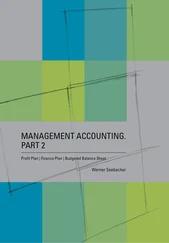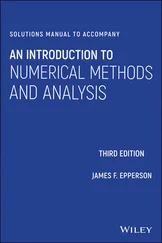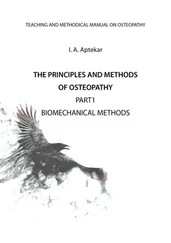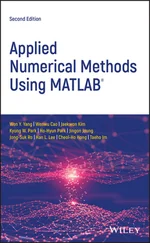Daniel J. Duffy - Numerical Methods in Computational Finance
Здесь есть возможность читать онлайн «Daniel J. Duffy - Numerical Methods in Computational Finance» — ознакомительный отрывок электронной книги совершенно бесплатно, а после прочтения отрывка купить полную версию. В некоторых случаях можно слушать аудио, скачать через торрент в формате fb2 и присутствует краткое содержание. Жанр: unrecognised, на английском языке. Описание произведения, (предисловие) а так же отзывы посетителей доступны на портале библиотеки ЛибКат.
- Название:Numerical Methods in Computational Finance
- Автор:
- Жанр:
- Год:неизвестен
- ISBN:нет данных
- Рейтинг книги:4 / 5. Голосов: 1
-
Избранное:Добавить в избранное
- Отзывы:
-
Ваша оценка:
Numerical Methods in Computational Finance: краткое содержание, описание и аннотация
Предлагаем к чтению аннотацию, описание, краткое содержание или предисловие (зависит от того, что написал сам автор книги «Numerical Methods in Computational Finance»). Если вы не нашли необходимую информацию о книге — напишите в комментариях, мы постараемся отыскать её.
Part A Mathematical Foundation for One-Factor Problems
Chapters 1 to 7 introduce the mathematical and numerical analysis concepts that are needed to understand the finite difference method and its application to computational finance.
Part B Mathematical Foundation for Two-Factor Problems
Chapters 8 to 13 discuss a number of rigorous mathematical techniques relating to elliptic and parabolic partial differential equations in two space variables. In particular, we develop strategies to preprocess and modify a PDE before we approximate it by the finite difference method, thus avoiding ad-hoc and heuristic tricks.
Part C The Foundations of the Finite Difference Method (FDM)
Chapters 14 to 17 introduce the mathematical background to the finite difference method for initial boundary value problems for parabolic PDEs. It encapsulates all the background information to construct stable and accurate finite difference schemes.
Part D Advanced Finite Difference Schemes for Two-Factor Problems
Chapters 18 to 22 introduce a number of modern finite difference methods to approximate the solution of two factor partial differential equations. This is the only book we know of that discusses these methods in any detail.
Part E Test Cases in Computational Finance
Chapters 23 to 26 are concerned with applications based on previous chapters. We discuss finite difference schemes for a wide range of one-factor and two-factor problems.
This book is suitable as an entry-level introduction as well as a detailed treatment of modern methods as used by industry quants and MSc/MFE students in finance. The topics have applications to numerical analysis, science and engineering.
More on computational finance and the author’s online courses, see www.datasim.nl.


 . Moreover, if
. Moreover, if  is any point in X and the sequence
is any point in X and the sequence  is defined recursively by the formula
is defined recursively by the formula  , then
, then  and:
and:
 .
. where
where  . This interval could represent time or distance, for example. In most cases we shall view this interval as representing time values. In the interval we define the initial value problem (IVP) for an ODE:
. This interval could represent time or distance, for example. In most cases we shall view this interval as representing time values. In the interval we define the initial value problem (IVP) for an ODE:
 is a first-order linear differential operator involving the derivative with respect to the time variable and
is a first-order linear differential operator involving the derivative with respect to the time variable and  is a strictly positive function in
is a strictly positive function in  . The term
. The term  is called the inhomogeneous forcing term , and it is independent of
is called the inhomogeneous forcing term , and it is independent of  . Finally, the solution to the IVP must be specified at
. Finally, the solution to the IVP must be specified at  ; this is the so-called initial condition .
; this is the so-called initial condition .
 is zero and
is zero and  is constant; in this case the solution becomes a simple exponential term without any integrals, and this will be used later when we examine difference schemes to determine their feasibility. In particular, a scheme that behaves badly for the above special case will be unsuitable for more general or more complex problems unless some modifications are introduced.
is constant; in this case the solution becomes a simple exponential term without any integrals, and this will be used later when we examine difference schemes to determine their feasibility. In particular, a scheme that behaves badly for the above special case will be unsuitable for more general or more complex problems unless some modifications are introduced. behaves. First, we wish to conclude that if the initial value
behaves. First, we wish to conclude that if the initial value  and inhomogeneous term
and inhomogeneous term  are positive, then the solution
are positive, then the solution  should also be positive for any value
should also be positive for any value  in
in  . This so-called positivity or monotonicity result should be reflected in our difference schemes (not all schemes possess this property). Second, we wish to know how the solution
. This so-called positivity or monotonicity result should be reflected in our difference schemes (not all schemes possess this property). Second, we wish to know how the solution  grows or decreases as a function of time. The following two results deal with these issues.
grows or decreases as a function of time. The following two results deal with these issues.










